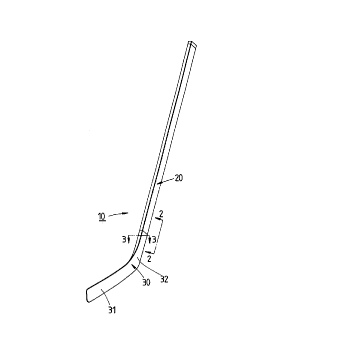Some of the information on this Web page has been provided by external sources. The Government of Canada is not responsible for the accuracy, reliability or currency of the information supplied by external sources. Users wishing to rely upon this information should consult directly with the source of the information. Content provided by external sources is not subject to official languages, privacy and accessibility requirements.
Any discrepancies in the text and image of the Claims and Abstract are due to differing posting times. Text of the Claims and Abstract are posted:
| (12) Patent Application: | (11) CA 2202454 |
|---|---|
| (54) English Title: | HOCKEY STICK |
| (54) French Title: | BATON DE HOCKEY |
| Status: | Dead |
| (51) International Patent Classification (IPC): |
|
|---|---|
| (72) Inventors : |
|
| (73) Owners : |
|
| (71) Applicants : |
|
| (74) Agent: | OSLER, HOSKIN & HARCOURT LLP |
| (74) Associate agent: | |
| (45) Issued: | |
| (22) Filed Date: | 1997-04-11 |
| (41) Open to Public Inspection: | 1998-10-11 |
| Availability of licence: | N/A |
| (25) Language of filing: | English |
| Patent Cooperation Treaty (PCT): | No |
|---|
| (30) Application Priority Data: | None |
|---|
A hockey stick consists of a shaft and a blade fastened with one end ofthe longitudinal axis of the shaft for hitting the puck. The shaft is
provided at one end thereof with a connection portion while the blade
has a neck provided with a connection slot which is engaged securely
with the connection portion of the shaft. The connection portion is
reinforced by at least one reinforcing member for averting the crack or
severance of the junction between the connection portion and the shaft.
Cette invention concerne un bâton de hockey composé d'un manche et d'une lame solidaire d'une des extrémités dudit manche et servant à la frappe d'une rondelle. Le manche comporte à une extrémité un embout de raccordement tandis que la lame comporte une partie coudée à fente qui se glisse sur cet embout pour former un assemblage solide. L'embout de raccordement est renforcé à l'aide d'un moins un élément de renfort destiné à empêcher les fissures ou la séparation à la jonction entre l'embout de raccordement et le manche.
Note: Claims are shown in the official language in which they were submitted.
Note: Descriptions are shown in the official language in which they were submitted.

For a clearer understanding of the status of the application/patent presented on this page, the site Disclaimer , as well as the definitions for Patent , Administrative Status , Maintenance Fee and Payment History should be consulted.
| Title | Date |
|---|---|
| Forecasted Issue Date | Unavailable |
| (22) Filed | 1997-04-11 |
| (41) Open to Public Inspection | 1998-10-11 |
| Dead Application | 2001-04-11 |
| Abandonment Date | Reason | Reinstatement Date |
|---|---|---|
| 2000-04-11 | FAILURE TO PAY APPLICATION MAINTENANCE FEE |
| Fee Type | Anniversary Year | Due Date | Amount Paid | Paid Date |
|---|---|---|---|---|
| Application Fee | $150.00 | 1997-04-11 | ||
| Maintenance Fee - Application - New Act | 2 | 1999-04-12 | $50.00 | 1999-04-09 |
Note: Records showing the ownership history in alphabetical order.
| Current Owners on Record |
|---|
| TSAI, SON-KUNG |
| Past Owners on Record |
|---|
| None |